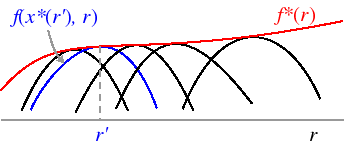For some reason, the topic of adaptation can sometimes turn
me into a grumpy old man. Maybe it’s because I’ve sat through hours of
presentations about how someone’s pet project should be funded under the name
of climate adaptation. Or maybe it’s the hundreds of times people say that
adaptation will just fix the climate problem, with no actual evidence to
support that other than statements like “corn grows just fine in Alabama.” Or
maybe it’s just that I’m really turning into a grumpy old man and I like
excuses to act that way.
In any case, I was recently asked to write a piece for
Global Food Security, a relatively new journal run by Ken Cassman that I’m on
the editorial board for. I used it as a chance to articulate some of the
reasons I am unconvinced by most studies trumpeting the benefits of adaptation.
That’s not to say I don’t think adaptation can be effective, just that most of
the “evidence” for it is currently quite weak. In fact, I think some
adaptations could be quite effective, which is why it’s so important to not
spend time on dead ends. The paper is here, and abstract below.
"Climate change adaptation in crop production: Beware of illusions"
A primary goal of studying climate change adaptation is to estimate the net impacts of climate change. Many potential changes in agricultural management and technology, including shifts in crop phenology and improved drought and heat tolerance, would help to improve crop productivity but do not necessarily represent true adaptations. Here the importance of retaining a strict definition of adaptation – as an action that reduces negative or enhances positive impacts of climate change – is discussed, as are common ways in which studies misinterpret the adaptation benefits of various changes. These “adaptation illusions” arise from a combination of faulty logic, model errors, and management assumptions that ignore the tendency for farmers to maximize profits for a given technology. More consistent treatment of adaptation is needed to better inform synthetic assessments of climate change impacts, and to more easily identify innovations in agriculture that are truly more effective in future climates than in current or past ones. Of course, some of the best innovations in agriculture in coming decades may have no adaptation benefits, and that makes them no less worthy of attention.


